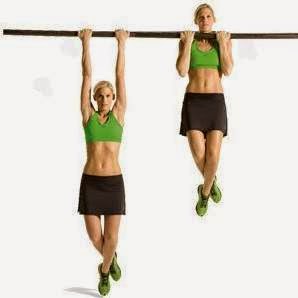Eeks, I haven't blogged in awhile! Luckily for you, it's not for a lack of topics to discuss here; rather a lack of time. But I'll save the excuses though and get right into it.
Today, I wanna talk about primary movement patterns for building a foundation for strength. When I refer to "primary movement patterns," I'm talking about functional movements that should be the foundation of any strength program. To take it back even further, I'm also talking about the movements encrypted on our DNA, the movements that our ancestors performed millennia prior to the invention of the trendy phrases "functional training" and "ancestral fitness."
The human body evolved the way it did for a variety of reasons that could be the focus of a future post. For the purposes of today's discussion, suffice it to say that the modern world world we inhabit and the way we move our bodies today (or don't move our bodies, which is a more accurate statement) are not conducive to cultivating robust health. There are myriad statistics and studies out there that link our sedentary lifestyle to chronic diseases like hypertension, diabetes, cardiovascular disease, osteoporosis, arthritis, etc. These ailments did not exist for our ancestors, despite the unpredictable conditions (drought, famine, terrestrial predators) in which they lived. Many a case has been made that our modern diet is the real culprit that feeds chronic disease, but the environmental changes that affect the quality of human movement are equally culpable.
So these days, we sit 8-10 hours a day; we slouch; we bend over at the waist to pick things up and blow out our backs; we put undue pressure on our joints because of inefficient mechanics; we develop upper crossed syndrome from typing on our computers/smartphones/insert-electronic-device-of-choice-here...basically, we're overweight, sick, and when we do move (often not by choice, but necessity), we move poorly. What, if anything, can be done about it?!? Are we beyond all hope?!!!?
No!!!!!! We can learn (or relearn) the primary movement patterns and with this foundation, build strength that will make us healthier and happier with less chronic pain.
What are the primary movement patterns? You may get a shorter or longer list depending on which fitness professional you ask, but since I agree with most of what she espouses, I've adopted Jen Sinkler's list of must-dos for any strength program: hip hinge, squat, push, pull, twist or rotation, and carry. Below, I provide a short description of each movement pattern, with a corresponding photo of an exercise that illustrates that movement, as well as why that movement is crucial to building a foundation of strength.
1. Hip hinge: Exercises that incorporate a hip hinge train the posterior chain (glutes, hamstrings), building a perkier, stronger bottom. The aesthetic benefits speak for themselves, but a strong posterior chain can help alleviate lower back pain, knee pain, and counteract some of the affects of sitting in a hip-flexed position most of the day. When you hinge at the hips, you move the hips back in space, not down like when you squat. Try to keep your spine straight, engage the core, and allow only a slight bend in the knees. Some examples of hip hinge exercises are deadlifts and hip bridges.
 |
| Pictured: Weighted hip hinge |
 |
| Pictured: Bodweight squat |
 |
| Pictured: Standard pushup |
 |
| Pictured: Chin up |
 |
| Pictured: Medicine ball lunge and twist |
 |
| Pictured: Bilateral KB carries and OH press & carry |

No comments:
Post a Comment
I'd love to hear your feedback! Thanks for visiting.